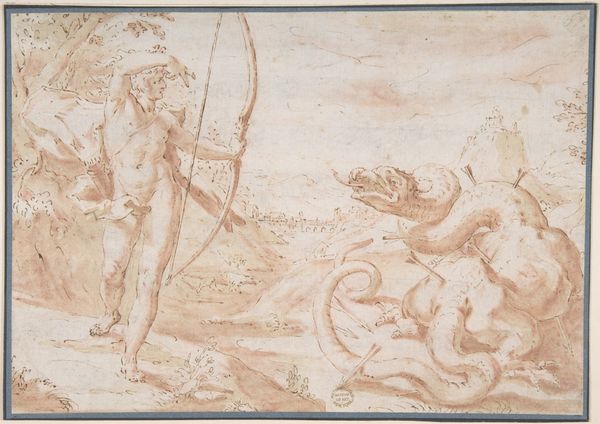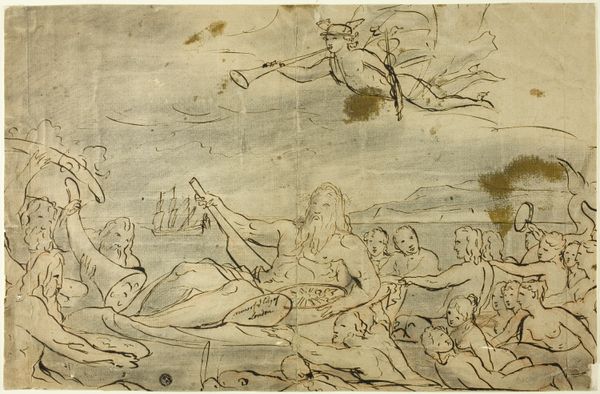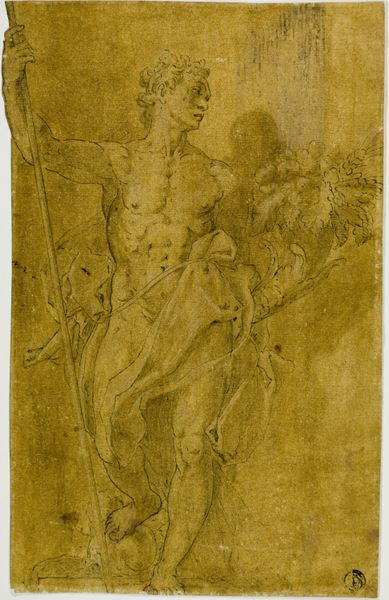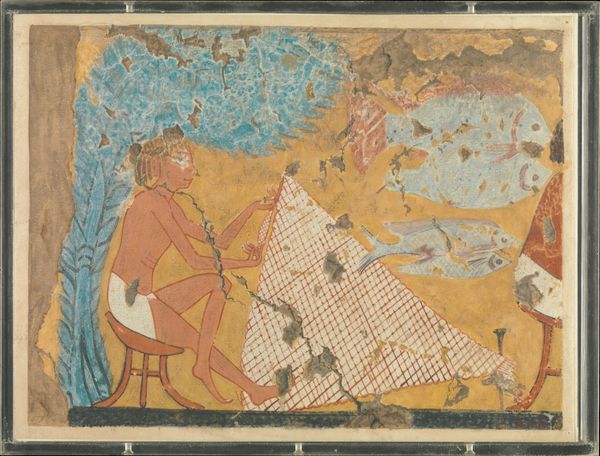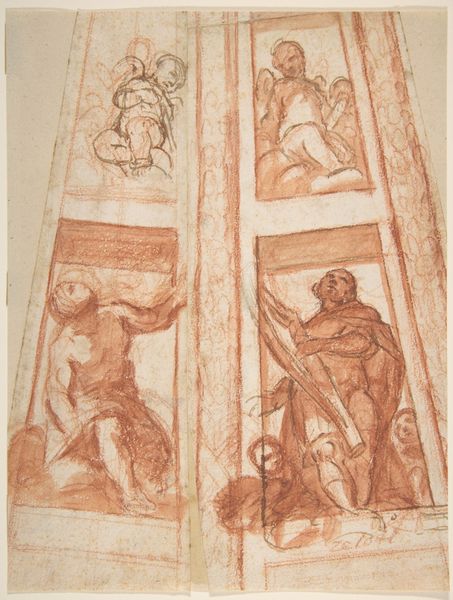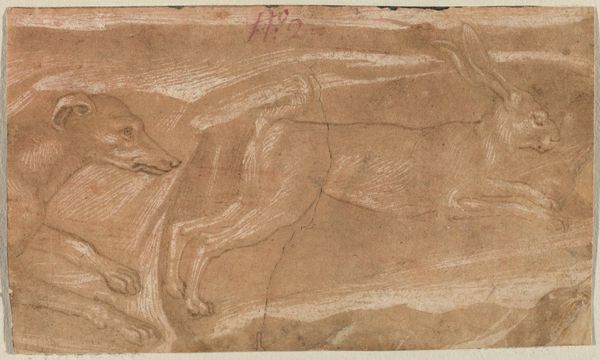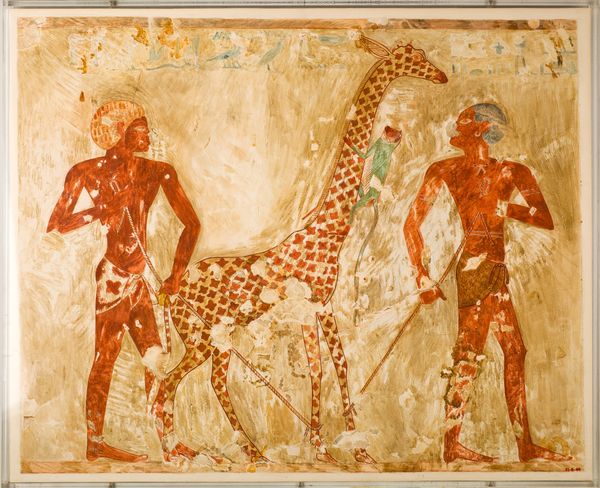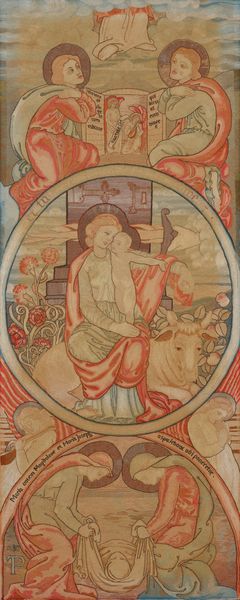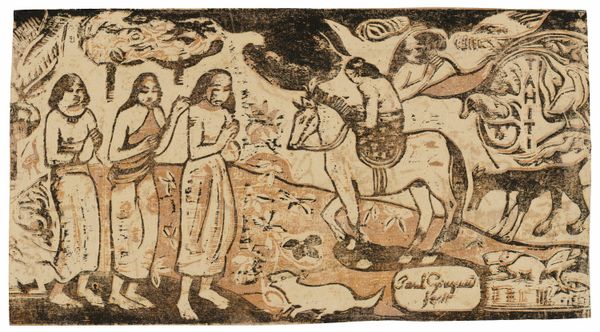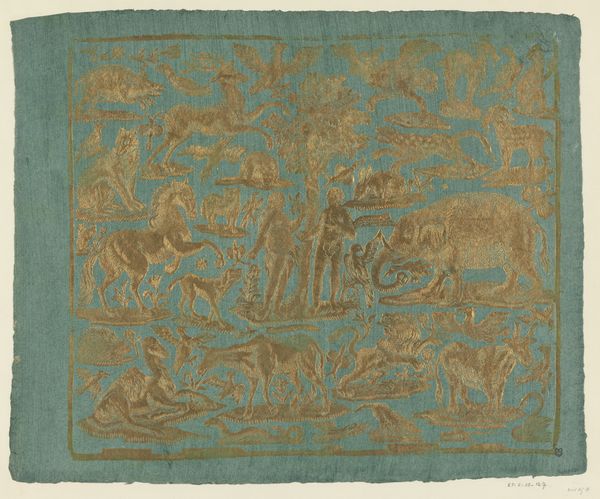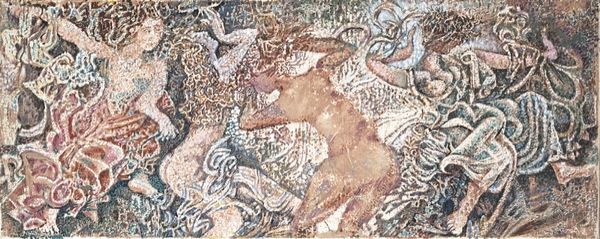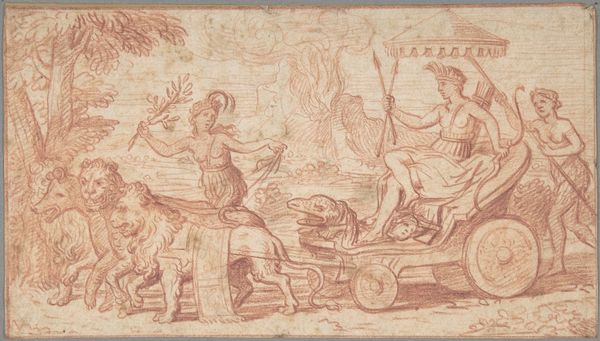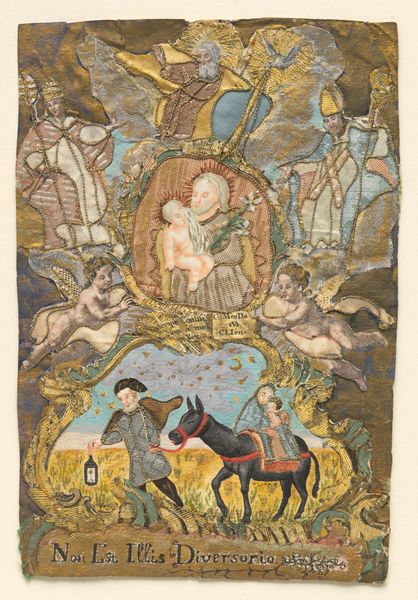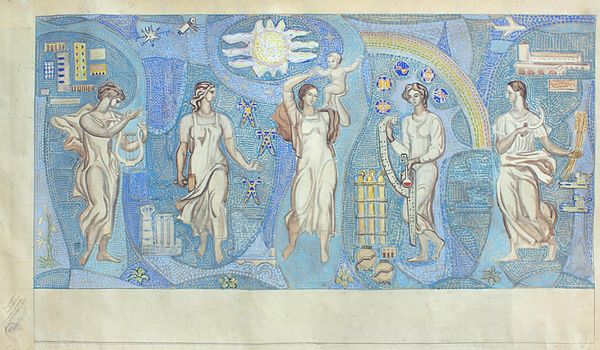
Dimensions: 102 cm (height) x 226 cm (width) (Netto)
Curator: Joakim Skovgaard’s “Adam Naming the Animals," created between 1871 and 1933, is rendered in watercolor and was initially conceived as a mural. It's part of the collection at the SMK, the National Gallery of Denmark. Editor: It strikes me immediately as almost dreamlike. The soft watercolors give everything a gentle, ethereal quality. The composition, though quite full, feels peaceful, and Adam himself is a study in serenity amidst a potential chaotic menagerie. Curator: Skovgaard was deeply influenced by "The Ancients," a group of Danish artists who advocated a return to simpler, more spiritual themes. The choice of watercolor allows the colors to blend subtly, evoking a sense of harmonious creation in line with Romanticism. What interests me is the depiction of the early relationship between humans and nature, with man placed above it. Editor: And that hierarchy, inherent in the biblical narrative, is what makes me a bit uneasy. Who gave Adam the right to name, and thus, define these creatures? How does this act of naming, of bestowing identity, establish power dynamics we still grapple with today? Curator: Precisely. This image reflects the pervasive cultural narrative wherein humanity is ordained to control the natural world. Considering its location in a public museum, it serves as a constant visual reminder of that hierarchy. Skovgaard clearly leaned towards traditional religious interpretations, evidenced in the somewhat subdued tone and the composition itself. Editor: Yes, but let's push further on Skovgaard's perspective. The choice to depict Adam nude and almost androgynous resists certain readings that celebrate the "masculine dominion" over nature that is associated with a patriarchal order. Maybe there’s something potentially subversive about placing a figure of apparent vulnerability and openness at the top of this hierarchy. How might the audience be expected to identify and relate to him? Curator: It’s a compelling point to acknowledge those potentially conflicting details within the broader context. Ultimately, whether viewers accept, challenge, or critically reimagine conventional, hierarchical interpretations becomes an important and open-ended process in the encounter between the image and its observers. Editor: Indeed. Ultimately, the power of this image lies in its ability to open conversations about how we understand and construct our relationship with the natural world and what these artistic legacies might perpetuate. Curator: A very interesting painting and reflection!
Comments
No comments
Be the first to comment and join the conversation on the ultimate creative platform.
